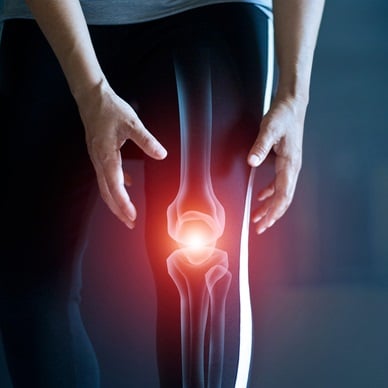How to Fall Asleep in 5 Minutes or Less

Many of us dream of being able to go to sleep almost the minute our heads hit the pillow. The reality is more likely a stretch of restlessness before the brain and body fully relax, allowing you to finally slip into dreamland and (hopefully) enjoy a night of quality shuteye. At times, it can feel like we’re spending as much time trying to fall asleep as actually sleeping. Leading to the question… is there anything we can do to fall asleep fast? Is it possible to learn how to fall asleep in 5 minutes or less? (After last night, I know I need the recipe!)
Natural Wake and Sleep Cycles
Many of us are busy going, going, going, at least on most days. As the clock speeds along, we naturally start to get tired. The drive to hit the sack gets higher through the evening until we are ready for sleep. We each have our own internal clocks or circadian rhythm (aka internal sleep rhythm). This clock varies for each of us and helps determine when the body relaxes and winds down as well as when it’s had enough sleep and is ready to wake and get on with the day. Some folks are naturally early risers, while others consider themselves night owls.
You can better support your circadian rhythm by getting out into the sunlight (or at least bright light) preferably within the first 30 minutes of waking. Enjoying brighter lights throughout the day, shifting to more amber or darker lighting in the evening, and keeping your bedroom as dark as possible at night can also support your natural rhythm. 1
How Long Does it Typically Take to Fall Asleep?
Unless you’re already sleep deprived, it’s highly unusual to fall asleep the moment your head hits the pillow. In other words, falling asleep immediately could be a sign that you’re not spending enough time between the sheets.
For most of us, the average time it takes to fall asleep is around 15 to 20 minutes. 2 Even if it takes you longer—say 45 minutes (checks watch), if that’s normal for you, it’s probably not a problem.
If, however, you toss and turn so long that you don’t get enough sleep, that can lead to problems. And unfortunately, this is very common. An estimated 1 in 3 Americans suffer from sleep deprivation (i.e., getting less than 7 hours of sleep per night). 3
Lack of sleep can lead to feeling:
- Fatigued
- Irritable
- Restless
- Depressed
- Anxious
This lack of sleep can also lead to decreased concentration, memory, and performance. It can also increase the risk of health issues like obesity, heart disease, and diabetes.
You may try to compensate by sleeping later, napping in the afternoon, or relying on more caffeine to help keep you energized. Unfortunately, these “solutions” may only provide temporary relief and make the problems worse as you build up a greater sleep debt.
How to Fall Asleep in 5 Minutes: Is it Possible?
We already know how important quality sleep is. It doesn’t just feel good: it helps our brains and body function better. For instance, a good night’s rest can improve learning, memory, mood, health, and more. 4
We also know that sometimes sleep doesn’t come easily. We can toss and turn, becoming fixated on how we’re not sleeping (which only makes it harder to sleep). You likely already know some of the most common tips for helping you drift off faster, such as:
- Turning off electronics, especially those with screens, at least an hour before bedtime
- Making sure you have a comfy bed and pillows (you may need to address how soft or firm your mattress is)
- Using your bed only for sleep and sex
- Practicing good sleep hygiene with regular sleep and wake times (even on the weekends) and a consistent bedtime routine
- Avoiding caffeine, alcohol, nicotine, and heavy meals too close to bedtime 5
- Reducing stress by practicing yoga, stretching, meditation, or another form of mindfulness in the evenings 6
- Exercising during the day (but not too close to bedtime) 7, 8
- Practicing gentle stretches or yoga shortly before bed 9
- Supplementing with magnesium, melatonin, L-Theanine, and other sleep-supporting nutrients, especially when your sleep cycle has been upset (i.e., due to travel, disruptions, changing hormones, etc.) 10, 11
There are some other simple strategies that can help you fall asleep faster and sleep better. Reducing the time it takes you to fall asleep can take some practice, but it can lead to big results. One of the best: you’ll feel more energized during the day.
So, let’s get to it. Here are some more surprising tips to help you drift off faster and maybe even learn how to fall asleep in 5 minutes or less.
BREAKING: Forget Taking Collagen, Try This 21-Second Trick for Healthier Skin & Hair Instead
1. Remove Distractions
Even if you don’t have any electronics in your bedroom, other little easily overlooked distractions can make it harder for you to fall and stay asleep. Everything from your bedside clock to the little LED light on your fan to the sliver of space between your curtains that allows light from a nearby street lamp can disrupt your sleep.
Wait! What if you look at your clock throughout the night? Don’t you need to be able to see what time it is, day or night? I hate to tell you this, but clock-watching can also prevent you from falling asleep and keep you awake if you wake up in the middle of the night. It can also make you more anxious if you’re not sleeping. And, it can become a habit that makes it more likely you’ll wake up every night. 12
Other distractions can come from traffic, noises from an adjacent room, or nighttime birds hooting outside your window. Take a good look around your room. Is it really dark enough? Are there any other distractions you can remove? Could some white noise help create a more soothing environment?
To create the right sleep environment, create a prehistoric “sleep cave” with all TV and other electronic devices with screens removed. Put black tape over any indicator lights, especially those that blink. Then use blackout shades or an eye mask to make it completely dark. Finally, remove any excess clutter that can weigh you down.
To make your room a true sanctuary, choose natural fibers for your bedding, add some healthy plants (or diffuse relaxing essential oils), and switch your lamps to warm-colored (amber) lighting as you prepare for bed. 13, 14
If you live in a noisy home or have noisy neighbors, you may benefit from some noise canceling in the form of a white noise machine, relaxing “sedative music,” or perhaps earplugs. 15 – 18
2. Adjust the Temperature
One simple way to get to sleep faster is by allowing your body to warm up with a soothing bath or shower before bed to help you relax.19 But once you head to the bedroom, adjust the thermostat so it’s not too hot nor too cold. According to research, the perfect temperature for your sleep cave is around 67 degrees F, give or take a degree or two (i.e., in the range of 60 to 70 degrees F or 15.6 to 19.4 degrees C). You may have to play with the number until you find the temperature that’s best for your quality sleep. 19
3. Learn to Breathe for Sleep
As humans, we breathe, without even thinking about it. Yet how we breathe can affect our automatic nervous system, which controls heart rate, tension, relaxation, and more. Fast, shallow breathing leads to anxiety and makes it harder to sleep. Slow, controlled, deep breaths, on the other hand, can be deeply relaxing and make it easier to get to sleep. One newer method that may help you fall asleep faster is the 4-7-8 method, developed by Dr. Andrew Weir.
Here’s how to use the 4-7-8 breathing method for sleep:
- Sitting upright in bed, start by placing the tip of your tongue on the ridge behind your upper teeth.
- Now, exhale completely, making a “whoosh” sound with your mouth. (It can help to pucker your lips.)
- Then close your mouth and inhale deeply through your nose as you count to 4.
- Hold the inhale for a count of 7.
- Then slowly exhale all the air out of your mouth for a count of 8.
Repeat 4 times before you lie down to go to sleep.
4. Sleep Like a Soldier
In 1981, Bud Winter shared “The Military Method” in his book Relax and Win. It’s a simple two-minute, three-step sleep technique to get to sleep faster, allegedly developed during World War II to help soldiers (specifically preflight airmen) get to sleep in 120 seconds. The goal was to improve their judgment, rationale, and decision-making in flight.
Here’s how to do The Military Method:
- Prepare your body by getting into bed in a comfortable position. Close your eyes and deepen your breath to let go of the day’s tension.
- Relax your body head to toe, starting at your forehead, eyes, jaws, shoulders, arms, chest, abdomen, thighs, and calves.
- Visualize feeling fully relaxed for 10 seconds. For instance, imagine resting in the bottom of a still canoe on a motionless pond with a clear, blue sky above you. Or that you’re gently swinging in a wide, comfortable hammock. If visualization doesn’t work for you, you can also repeat a helpful mantra, such as “don’t think” as you drift off. 20
This technique can take several weeks to master (the original pilots practiced for 6 weeks, resulting in a claimed 96% success rate) to fall asleep quickly. But many people find it easier to relax and fall asleep within a night or two.
5. Count Your Breaths, Not Sheep
We’ve all heard of counting sheep to fall asleep. Maybe this works for someone? For most of us, though, it’s better to forget the sheep and count our breaths instead.
Simply close your eyes, and inhale and exhale deeply. Then allow your breath to become normal. Don’t intentionally change the rate of your breathing. Just let each breath come and go naturally.
Next, count each exhalation until you reach 5. Once you hit 5, start over again at 1. And if you forget where you were, just start over at 1.
This technique is designed to focus and quiet the mind. It’s super simple and gets easier with every practice.
6. Practice Progressive Muscle Relaxation
One way to help your body relax more deeply is to first tense up each body part and then fully release. This technique has been found to help overcome insomnia. 7
Here’s how it looks in practice:
- Begin by taking a deep, cleansing breath.
- Then start at the top of the body by tensing up (scrunching) the muscles in your face, and then allow them to fully relax.
- Progressively move down your body by tensing up each muscle group and then allowing it to relax, from the neck and shoulders to the arms to the abs to the thighs, calves, and feet.
- You may find you fall asleep before you even reach your feet. That’s okay. Otherwise, it will help you fall asleep shortly after.
You can also find guided progressive muscle relaxation in various apps to walk you through the process, which can be helpful as you’re learning it.
7. Let It Go
If you’re looking for ways to fall asleep faster, you likely have been having issues falling asleep. Unfortunately, thinking about sleeping too much can make it harder to fall asleep.
If you find that you’re practicing quality sleep hygiene and practicing breathing techniques, only to lie there wondering why you can’t fall asleep again, it may be time to try something counterintuitive: stop thinking so much about falling asleep.
Instead, allow your body to naturally get tired and learn to listen to it. Wait until you’re really, really tired before you go to bed—even if that’s a bit later than your partner or your set sleep schedule. Step away from rigid rules and become curious about what you’re doing on nights (as well as during the day) when it seems a bit easier to fall asleep.
Perhaps you sleep better when you’ve exercised intensely, walked first thing in the morning, ate a smaller dinner, snuggled with your partner, child, or pet, or had a cup of hot tea before bed. Or maybe it’s on nights when went out socially. Or found time to read or listen to an interesting book or podcast at night. Perhaps you slept better after eating a small snack before bed. Many people try to reduce carb intake at night, but some research has found that eating simple carbs (like white rice, bread, pasta, potatoes, or a piece of fruit) four hours before bed helped people fall asleep faster and sleep better. 21
Whatever helps you sleep, it probably isn’t thinking about going to sleep. It’s okay to let it go. And if you can’t let it go, some research suggests that trying not to fall asleep while lying in bed can actually make it easier to fall asleep and sleep more deeply. 22, 23 So, if sleep is elusive, stop trying to go to sleep, and instead, perhaps turn on an audiobook or podcast (low volume) and see if you “accidentally” drift off. A less exciting or familiar story or episode may, however, help so you don’t get caught up in the story.
8. Take Charge of Your Thoughts
If you find unwanted thoughts—such as past mistakes, things you wish you had or hadn’t said (today, this past week, or years ago), tomorrow’s to-do list, etc.—it can be difficult to drift off. 24 Obviously.
One way to help break free of unwanted thoughts is to practice visualization. Similar to daydreaming, you can imagine a calming place or memory. You can also picture doing a repetitive but positive or rewarding activity, such as practicing free throws, walking peacefully through a forest, or hitting the bull’s eye in archery or darts.
Daydreaming can help relax your mind and body, allowing you to drift off naturally. If you find your mind wandering back to the unwanted thoughts, say thank you (with no judgment) and return to your visualization.
How to Fall Asleep Quickly — A Recap
If you fall asleep the moment you hit the sack, you’re likely sleep deprived. On the other hand, if you find it takes 30 minutes to an hour (or more) to finally drift off, it can get frustrating and may make it even more difficult to sleep. The key is to find a balance, so you can gently drift off in 5 to 15 minutes to get good, restful, and restorative sleep.
While getting prepped (i.e., practicing good sleep hygiene) is the most important, other tried and true techniques have been found to help folks fall asleep even faster and enjoy deeper sleep throughout the night. Which one will you be trying tonight?






 US Doctor: "Eating This Every Day Can Snap You Into Ketosis"
US Doctor: "Eating This Every Day Can Snap You Into Ketosis" 3 Key Nutrients to Help Lubricate Your "Tin Man" Joints
3 Key Nutrients to Help Lubricate Your "Tin Man" Joints AVOID Plant-Based Protein Powders (unless...)
AVOID Plant-Based Protein Powders (unless...)

